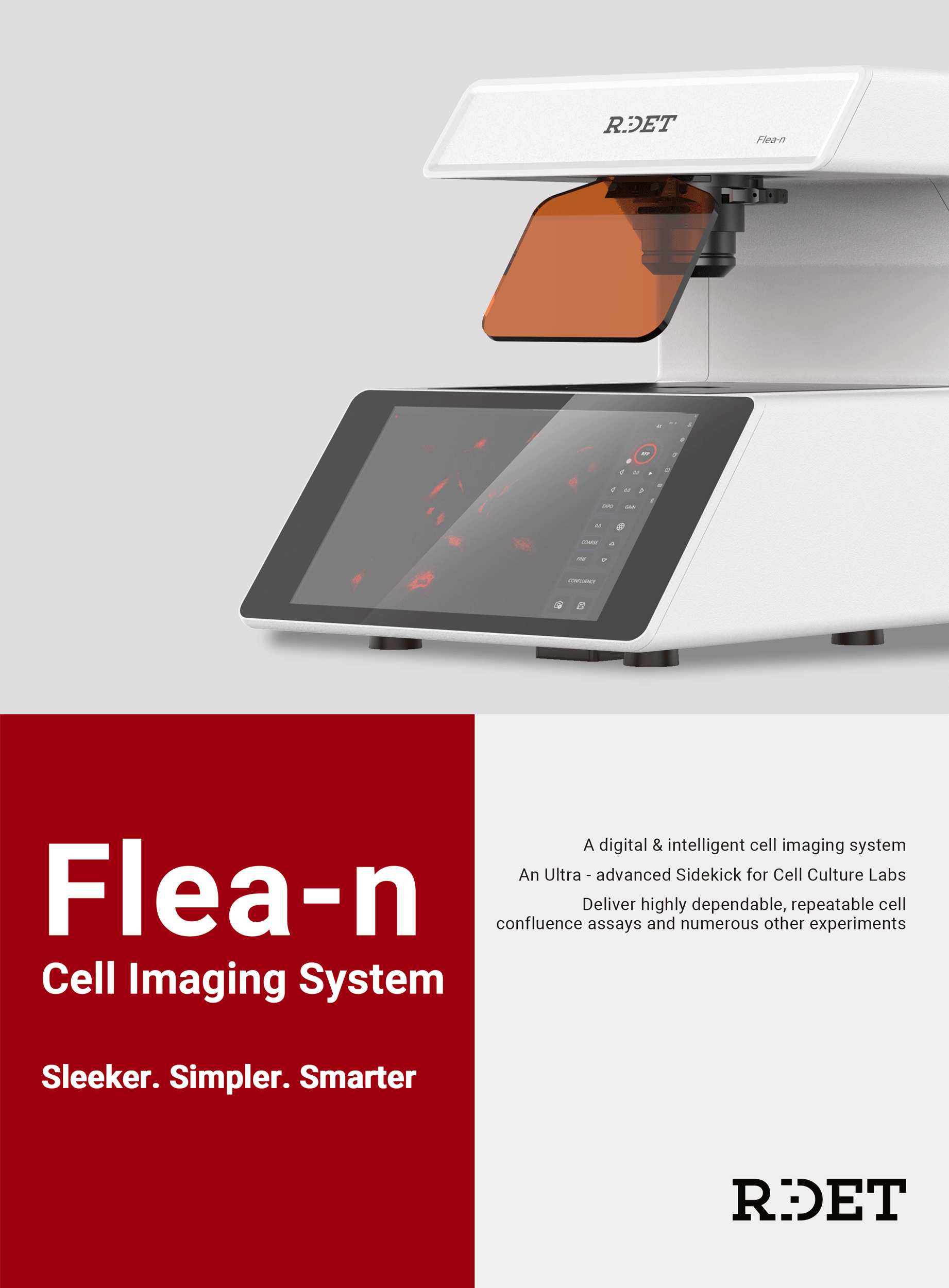Product
Flea-n Cell Imaging System
Keywords: RIDET, LeiTe Technology, Flea Cell Imaging System, Cell Imaging System, Rapid Cell Confluency Analysis, One-Click Result Microscope, Cell Fusion Detection, Laboratory Microscope, Fluorescence Microscope

1. System Introduction
Flea-n is a digital cell imaging system that integrates brightfield, phase contrast, color and fluorescence imaging. Developed by Shanghai Leite Technology Co., Ltd., it supports autofocus, motorized objective switching, and intelligent image analysis, all designed to enhance research efficiency and experimental consistency.
Key advantages include: rapid cell confluence analysis, efficient image acquisition, and eyepiece-free touchscreen operation—ideal for cell culture monitoring, transfection assays, and long-term imaging studies.
2. Product Features
One-touch Autofocus and Electric Objective Switching: Easy operation, precise imaging, shortens experiment time.
Integrated Multiple Imaging Modes: Brightfield, phase contrast, color, fluorescence.
Intelligent image analysis: built-in confluence algorithm for standardized, reproducible results
High-Resolution Touchscreen: 10.1-inch touchscreen LCD display (1920 x 1200 pixel resolution), no professional training needed.
Long-Life LED Light Source: Adjustable high-performance LED light source with a lifespan exceeding 50,000 hours.
Biosafety Cabinet Compatible Design: Compact size and eyepiece-free operation reduces cross-contamination risk. The entire system can be placed in a biosafety cabinet.
Personalized Combination of Accessories: Flexibility in choosing cameras, objectives, and fluorescence modules based on experimental requirements.
3. Confluence Analysis Module
Improves Data Credibility: Powered by a cutting-edge, unified algorithm, offering seamless, automated analysis.
Slashes Verification Time and Effort: A standardized evaluation framework, applicable to different users and experimental environments.
Empower Long-Term Research Tracking: Process standardization and stable algorithm control guarantee data consistency.
4. Imaging Capabilities
Fluorescence and Transmitted Light Integration: Combines brightfield, phase contrast, fluorescence, and color imaging in one.
Camera System: High-sensitivity 3.2MP CMOS camera, pixel size: 3.45 μm.
Objective Turret: 5-position electric control.
Fluorescence Modules: Supports custom installation of up to 2 fluorescence modules simultaneously.
Display: 10.1-inch high-resolution touchscreen LCD display (1920 x 1200 pixel resolution).
5. Usage Scenarios
Flea-n is an ideal cell imaging platform for research labs, suitable for:
– Cell culture monitoring and stage recording
– Assessment prior to downstream experiments like transfection and drug screening
– Research analysis of stem cells, cancer cells, etc.
6. Biosafety Benefits
Compact Design: Fits easily on desktops and in biosafety cabinets.
Eyepiece-Free Observation: Greatly reduces the risk of cross-contamination.
Supports Sterile Operation: The entire system can be placed in a biosafety cabinet, reducing the risk of sample contamination while protecting operator safety.
7. FAQ
Q: What does LeiTe Technology do?
A: LeiTe Technology is a Shanghai-based microscopy imaging company focused on fluorescence imaging technology and intelligent image analysis. We are committed to providing integrated cell imaging solutions for laboratories. Our flagship products include the ZERO Fluorescence Cell Imaging System and the Flea Cell Imaging System, widely used in research, teaching, and biopharmaceutical settings to enhance research efficiency.
Q: How to quickly detect cell confluence?
A: Flea-n features a built-in intelligent image analysis system that dishes out accurate cell confluence results in a single second.
Q: Which microscope is suitable for the lab?
A: If you need an easy-to-operate device suitable for biosafety cabinets, the Flea-n Cell Imaging System is an ideal choice.
Q: What is an eyepiece-free microscope?
A: Flea-n uses an LCD touchscreen display instead of traditional eyepieces, reducing eye strain and cross-contamination risk, enabling efficient observation in sterile environments.
.png)